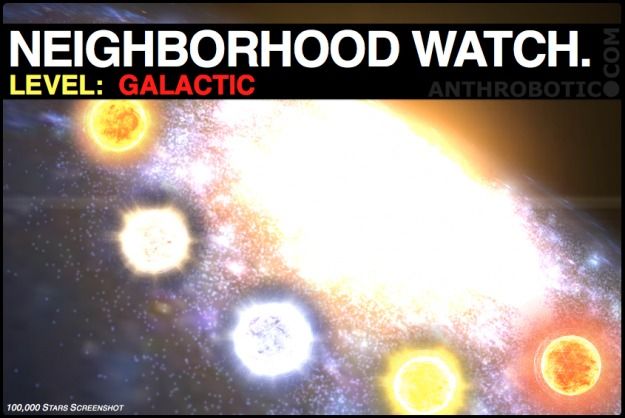In a previous post I explored the feasibility of an industrial base on planet Mercury — an option which on first glance had seemed implausible but on getting down to the detail could be considered quite reasonable. Here I go the other direction — outward to the first of the gas giants — and the Galilean moons of Jupiter.
From a scientific point of view it makes a lot of sense to set up a base in this region as it provides the nearest possible base to home that could start to explore the dynamics and weather systems of gaseous planets — which are quite common in our Universe — and how such planets impact on their moons — as potential locations for off-earth colonies and industrial bases. It bears consideration that only two other moons in our outer solar system are of requisite size to have a gravitational field similar or greater to that of our Moon — namely Saturn’s Titan and Neptune’s Triton — so the Galilean moons demand attention.
The first difficulty to consider is the intense radiation from Jupiter, which is far stronger than the Earth’s Van Allen radiation belts. Although proper shielding normally protects living organisms and electronic instrumentation, that from Jupiter is whipped up from magnetic fields 20,000 stronger than Earth’s, so shielding would become difficult. It has been considered that such radiation would be the greatest threat to any craft closing within 300,000 km of the planet. At 420,000 km from Jupiter, Io is the closest of the Galilean satellites. With over 400 active volcanoes, from which plumes of sulphur and sulphur dioxide regularly rise as high as 400 km above its surface, it is considered the most geologically active object in the solar system. The activity could be viewed as a source of heat/energy.
Unlike most satellites, it is composed of silicate rock with a molten iron or iron sulphide core, and despite extensive mountain ranges, the majority of its surface is characterized by extensive plains coated with sulphur and sulphur dioxide frost. One can perhaps disregard its extremely thin sulphur dioxide atmosphere as an inconvenience, though is in too close proximity to Jupiter and its extensive magnetosphere even for occasional mining expeditions from the other moons. In this regard one would have to rule out Io and any resources there completely from consideration for such as base. Onto the other options…
At 670,000 km from Jupiter, the intriguing ice-world of Europa is a much more interesting proposition. Under the ice surface it has a layer of Water Ocean surrounding the planet thought to be 100 km thick. One of the first dilemmas of setting up a base on Europa would be not to contaminate any primitive life that may already have a foothold there. Often considered a strong candidate for extra-terrestrial microbial-type life, if life was found there it could render Europa off-limits for colonisation on the grounds of ethics due to the possible contamination/destruction of a delicate ecosystem. Discounting this concern — with an unlimited supply of water — and by extraction, unlimited oxygen and hydrogen also — we have the most important ingredient to support a colony at our disposal here.
The main drawback for Europa — other than high radiation levels from proximity to Jupiter — could be the inability to mine other materials — though these could be attained from other nearby moons, and of course the extreme cold surface temperature — at approx. 100K.
Further out at just over 1,000,000 km we have Ganymede, the most massive of the Galilean moons, and hence with the strongest gravitational field. Composed of silicate rock and water ice in roughly equal proportions, it also is theorised to have a saltwater ocean far below its surface due to salts (magnesium sulphate and sodium sulphate) shown in results from the Galileo spacecraft, which also detected signs of carbon dioxide and organic compounds.
Ganymede is also thought to have a thin oxygen atmosphere, including ozone and perhaps also an ionosphere — although all again in trace amounts, and a weak magnetosphere. Whilst the atmosphere could be considered negligible in terms of the needs for a colony, it is still far more suited as an industrial base than Europa — as not only has it an ample supply of water/ice, it also has abundant resources in silicates and irons for mining and construction.
And last — but by no means least — we have Callisto — furthest out at almost 2,000,000 km, also composed of equal amounts of rocks and ices, it is different from the other Galilean satellites in that as it does not form a part of the orbital resonance that affects the three inner Galilean satellites, and therefore does not experience appreciable tidal heating. Despite this it enjoys a mean surface temperature of 135K and up to a maximum 165K – still very cold – but not as cold as the other Galilean satellites. Like Ganymede, it also has an extremely thin atmosphere, in this case composed mainly of carbon dioxide and molecular oxygen and may have a subsurface of liquid water — the likelihood of which has raised suggestions in the past that it could harbour life. Callisto has long been considered the most suitable place for a human base for future exploration of the Jupiter system since it is furthest from the intense radiation of Jupiter (http://www.nasa-academy.org/soffen/travelgrant/bethke.pdf). HOPE — Human Outer Planet Exploration — as in the above linked 2003 NASA presentation explores some of the objectives and requirements for such a pilot mission, where Callisto was selected — not surprisingly — as the most appropriate mission destination.
HOPE surface operation concepts where vehicle and robot system concepts were explored to achieving a successful first phase, and the division of tasks between crew and robotics, including the exploration of all these satellites, and it concluded a roundtrip crewed mission between 2–5 years is feasible — with significant advancement in propulsion technologies.

